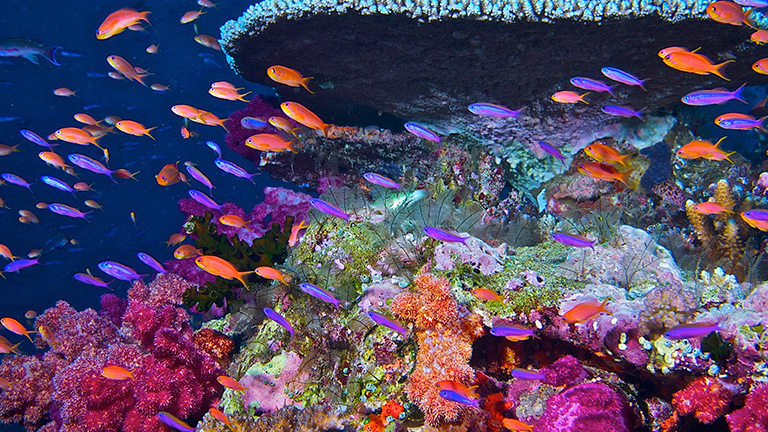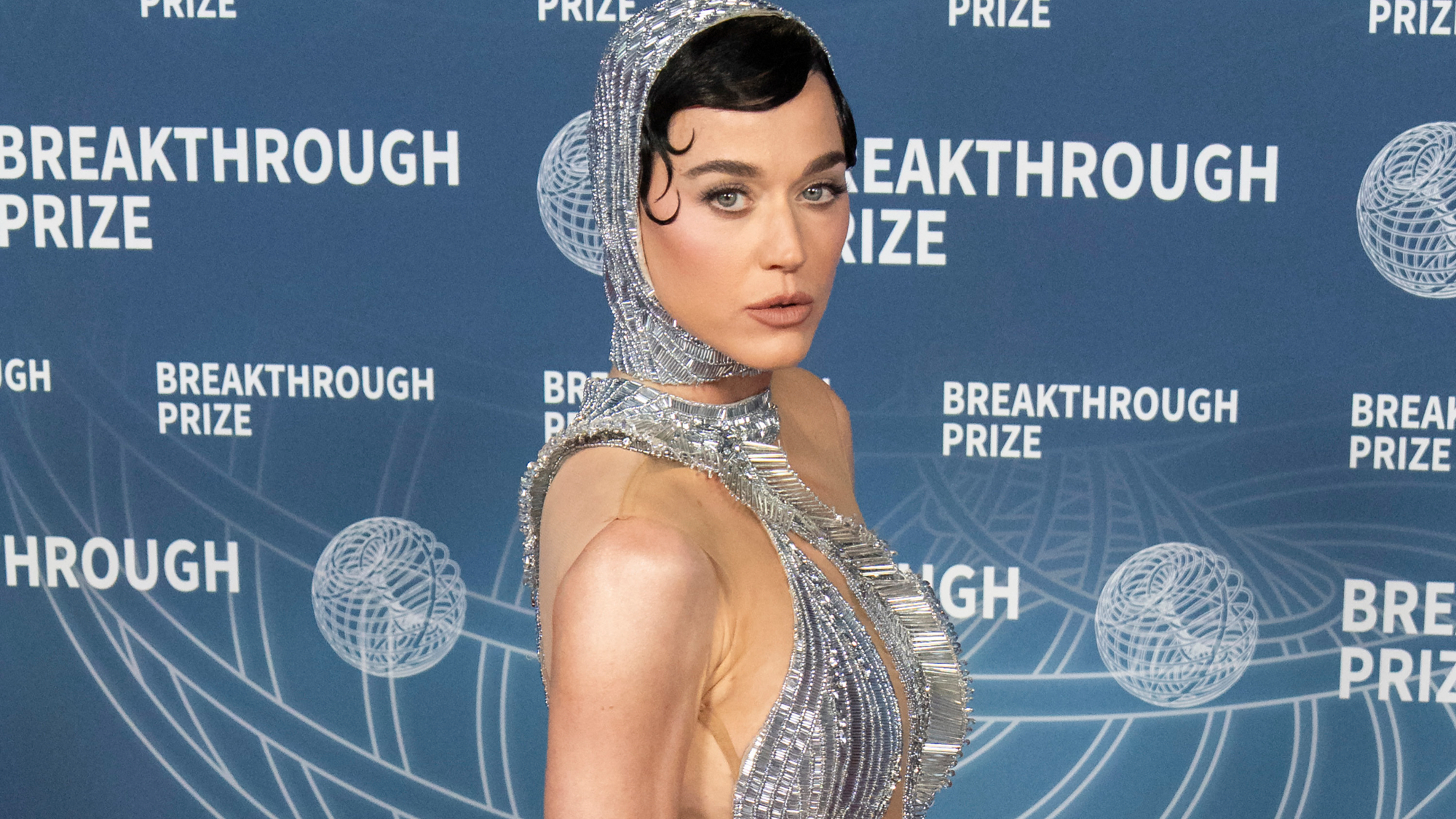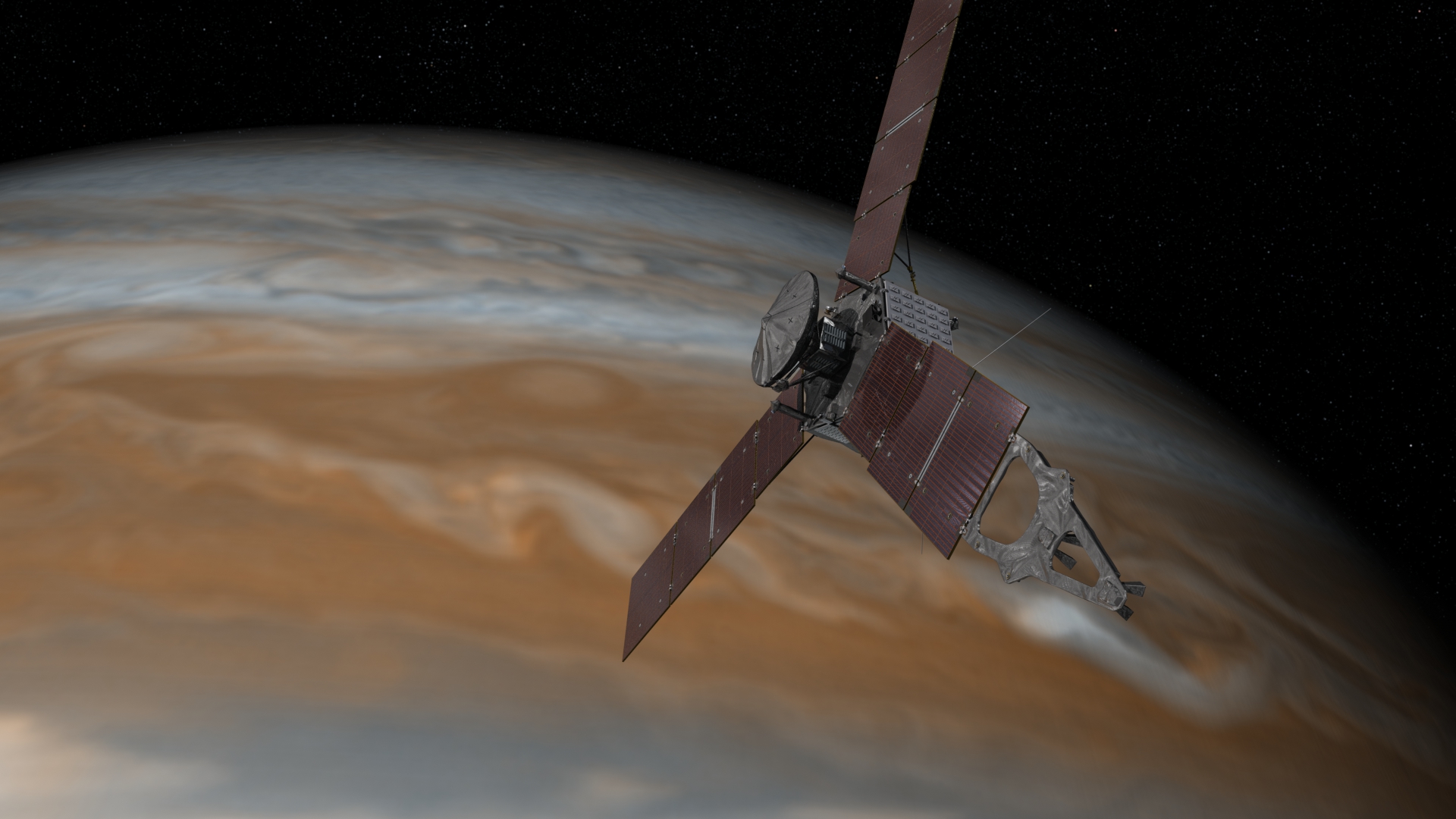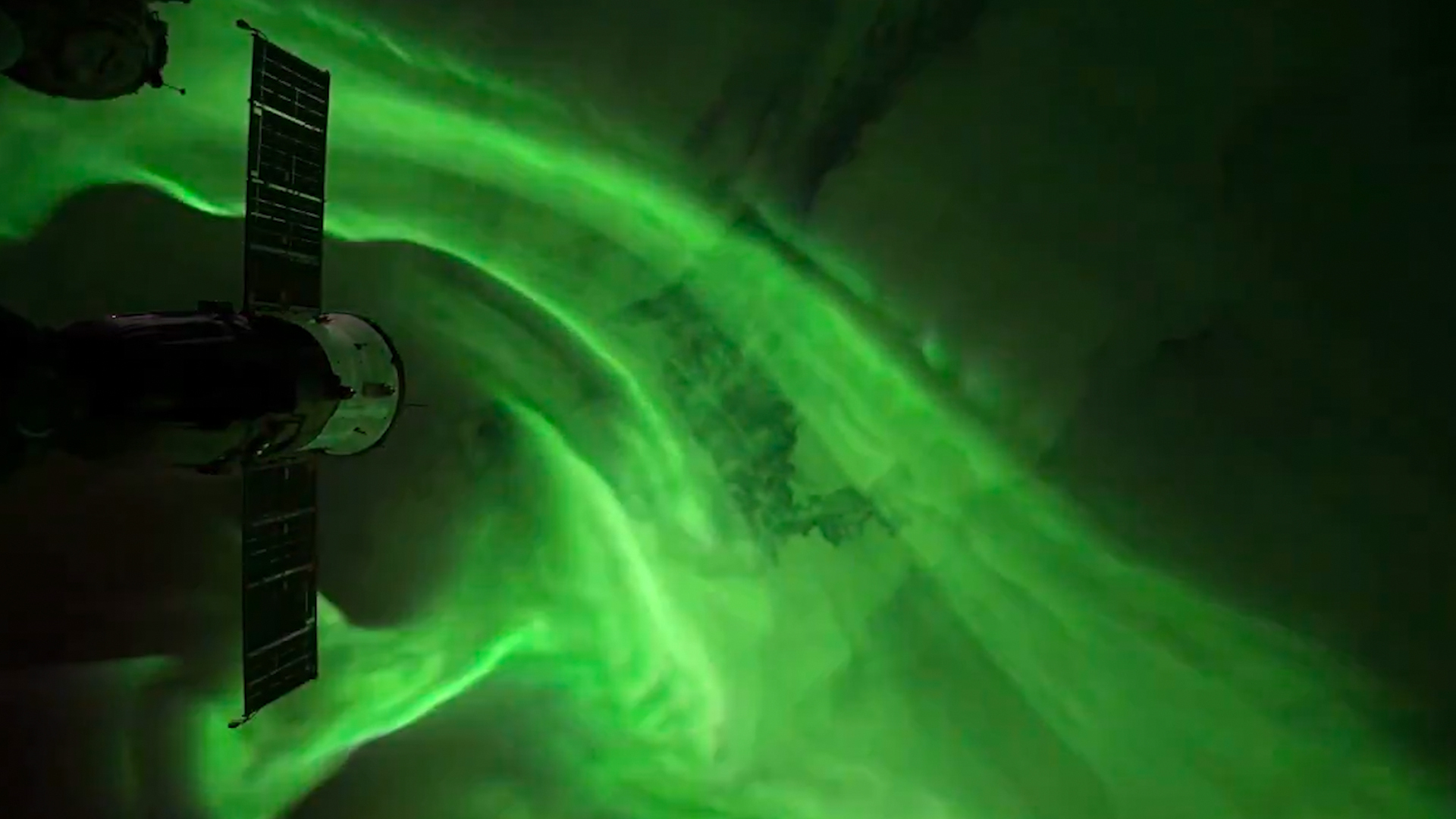Should we seal DNA samples of Earth's endangered species in a moon crater?
Amid the climate crisis, is it a good idea to start sending preserved genetic material to the moon?

As warming sea temperatures and pollution continue to degrade the world's coral reefs at an unprecedented rate, scientists are investigating the feasibility of preserving them — in outer space.
The idea is to store a biorepository — a biobank that stores samples of biological material cooled to temperatures low enough it is essentially suspended in time — inside permanently shadowed craters on the moon, whose frigid temperatures scientists say would be suitable to preserve such a facility for hundreds of years. The samples, coral genetic material in this case, would be returned to Earth on-demand and reseeded in our oceans to restore living reefs.
"There's no place on Earth cold enough," Mary Hagedorn, a senior research scientist at the Smithsonian's National Zoo and Conservation Biology Institute, told Space.com. That includes the coldest regions on our planet — the north and south poles — which are warming due to climate change at rates faster than any area on Earth.
Related: NASA confirms summer 2023 was Earth's hottest on record
It's therefore unlikely scientists will be able to preserve samples at the required frigid temperatures for hundreds of years, Hagedorn said. "Who knows what the poles are gonna look like? They're changing the fastest."
Similar to procedures used in human sperm banks, the technique used by scientists to freeze and store coral germ cells (sperm and larvae) involves cooling the specimens to temperatures close to that of liquid nitrogen, which measures in at −196 degrees Celsius (−320 degrees Fahrenheit). In comparison, even the coldest place on Earth would feel warm — The Eastern Antarctic Plateau, for instance, boasts a bone-chilling temperature of −98 degrees Celsius (−144 degrees Fahrenheit).
Craters pockmarked on the moon's polar regions, however, never receive direct sunlight, thanks to the moon's axis being almost perfectly perpendicular to the direction of the sun's light. There, temperatures drop to −250 degrees Celsius (−415 degrees Fahrenheit), making them some of the coldest places in our solar system. These conditions, Hagedorn argues, are favorable to store the frozen samples for hundreds of years.
Get the Space.com Newsletter
Breaking space news, the latest updates on rocket launches, skywatching events and more!
'Frozen and alive'
The standard practice for freezing and preserving biological material, known as cryopreservation, pauses all biological activity such that the specimens remain "frozen and alive," said Hagedorn, who is an expert in cryopreservation. "It is as if you pressed the time button and said, 'Okay, stop now.'"
To date, scientists have collected samples of live colonies, skeletons and genetic material of 200 coral species and stored them safely — but, to put that into perspective, there are about 1,000 known coral species worldwide, and therefore about 800 left to preserve. This urgency to collect the remaining species is further underscored by the fact that marine heatwaves, a result of global warming, place biological stress on corals and "make their reproductive material too weak to withstand the rigors of being cryopreserved and thawed," Hagedorn wrote in an article published mid-April in The Conversation.
Hagedorn is part of a team that has so far cryopreserved over 50 species of corals from the Great Barrier Reef, the Caribbean and the Gulf of Mexico, among other places. The samples are maintained in biorepositories worldwide, but the very fact they are located on Earth makes them susceptible to the dire effects of climate change, she said. In 2017, for instance, meltwater from Arctic permafrost that had thawed due to extreme temperatures breached a secure Norwegian biorepository. This was a biobank that safeguards duplicates of the world's crop species; thankfully, no seeds were reported lost, but the risk was high. The moon, fortunately, would not have these issues.
Storage services on the moon
Shipping a box of frozen live cells to a dark pocket of the moon comes with its unique set of challenges, and the scientists are still figuring out the plan's blueprints. For one, the biobank must be encased in radiation-proof packaging to protect the frozen samples during their time on the moon, which is airless and therefore highly susceptible to sun damage. Another concern is just how the biorepository could be placed into a lunar crater, given these features' ice-layered floors are a challenge for astronauts to navigate. Hagedorn said it could be a job for robots, perhaps like the dog-shaped ones NASA is working on to someday explore hazardous areas on the moon — possibly along with packs of robot companions.
As a trial, Hagedorn co-led an effort that collected and cryopreserved 10 fins of Starry goby, tiny fishes whose bodies are sprinkled with iridescent blue spots. They're found in abundance near coral reef habitats.
Eventually, she hopes to secure funding and partners to test how these samples fare under space-like conditions simulated on Earth. Then, a test run on the International Space Station (ISS) would show how different the returned samples are compared to their Earth-based counterparts which can then guide the packaging requirements — that is, if the ISS still exists. Hagedorn estimates sending samples to the ISS would take somewhere between three to five years from the time she receives funding, a timeline that may be too long given the ISS' scheduled retirement in 2030.
Still, "that stuff is easy compared to trying to decide where it's going to go on the moon and how it's going to be there," she said. The governance of the facility’s travel and location on the moon "will be very complex and could take years."
Hagedorn is not the only researcher exploring the feasibility of a lunar biorepository. In 2021, University of Arizona researcher Jekan Thanga proposed sending an ark filled with cryogenically frozen seeds, sperms and eggs of 6.7 million Earth species to lava tubes on the moon as a “modern global insurance policy.” His team estimated such an effort would require 250 rocket launches; for context, building the ISS took 40 launches over a decade.
If a biorepository on the moon is someday successful (the goal is no doubt lofty) scientists hope it could act as a hedge against the loss of not only corals but also millions of other species — perhaps even humans.
Still, not everyone agrees that it's a good suggestion. "I don't think it's [the] right idea for right now," Noah Greenwald, the endangered species director at the Center for Biological Diversity, told CBS News. "I think we really need to focus on protecting more of the natural world, so we don't lose species in the first place."
Join our Space Forums to keep talking space on the latest missions, night sky and more! And if you have a news tip, correction or comment, let us know at: community@space.com.

Sharmila Kuthunur is a Seattle-based science journalist focusing on astronomy and space exploration. Her work has also appeared in Scientific American, Astronomy and Live Science, among other publications. She has earned a master's degree in journalism from Northeastern University in Boston. Follow her on BlueSky @skuthunur.bsky.social
-
ChrisA Do you need to save actual DNA? Why not sequence the DNA and back up the data?Reply
Perhaps the title of the article is misleading and they want to save more than just the DNA, maybe whole frozen organisms?
The other thing is that it is pointless to store anything unless you have a means of using what is stored. Has anyone created a living organism from the frozen samples they propose to store? With no proof of concept demo, no one will seriously fund this.









